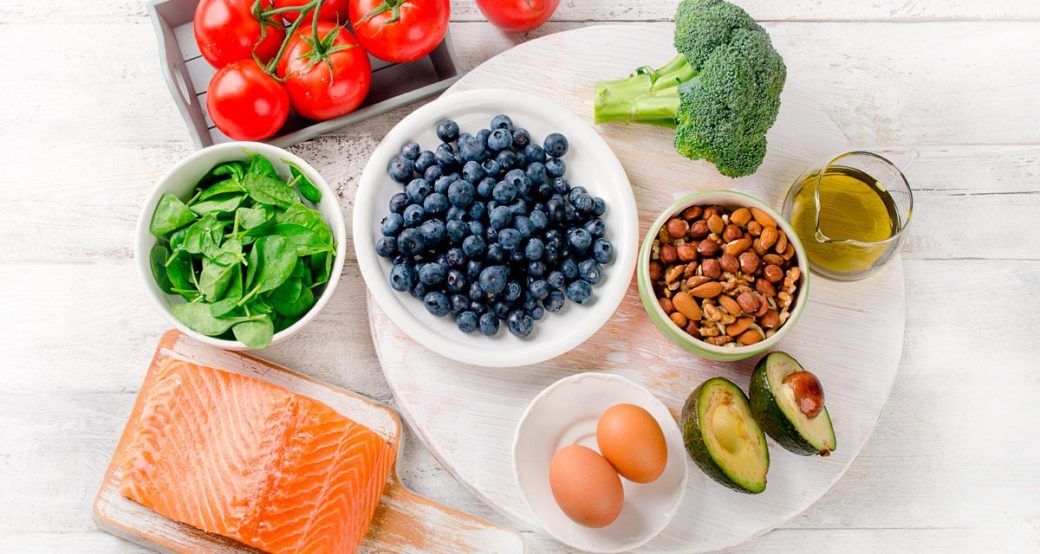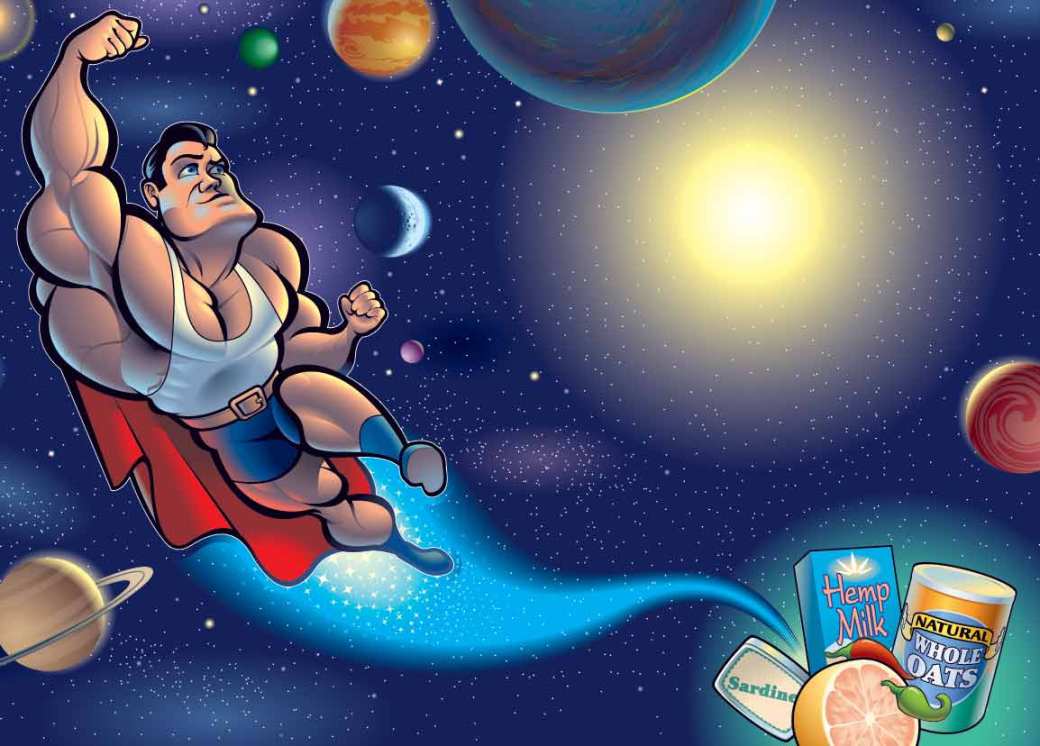Triage- the process of determining the priority of patients’ treatments based on the severity of their condition.
Wounded. I found myself in an ER with a bandaged head. The urgent care sent me away. They feared I might have sustained a concussion. My lacerated head required 13 stitches/staples but thank God I didn’t have a concussion. (Yay for a strong neck!)
Can you imagine if when I saw the doctor this was my first question:
“Hey Doc, what do you think about this paper cut on my finger???”
They may have thought the blow to my head caused some serious damage.
And yet this is what we do with nutrition…
“What do you think about acai berries?”
“Have you heard about this new superfood that does xyz?”
“How about intermittent fasting?”
“Is apple cider vinegar as amazing as some people claim?”
And while I love to debate the nuances of different dietary strategies (most of which, if they work, actually have more in common than not) most people are suffering from basic issues that should be addressed first.
Yes there are, to a degree, hacks and small things that when added up consistently may help with that last 1% but if you aren’t doing the 99% simple things first it’s like mowing the lawn while your house is on fire.

Here are three simple steps that you can do to help yourself look, feel and perform better.
1. CONQUER YOUR DAILY HYDRATION
Our body weight is made up of nearly 60 percent water. All of our cells soak in water. So a 200 pound man is carrying roughly 120lbs of water! Different tissues in the body contain different ratios of water.
Water is so important that without it human life would be unsustainable and yet most people live their lives in a semi-dehydrated state.
Consider the following as it relates to water loss:
-Just a 0.5% of body water loss puts an increased strain on the heart
-A 1% loss reduces aerobic endurance
-3% Reduces muscular endurance
-4% Reduced muscle strength, reduced motor skills, heat cramps
-5% Heat exhaustion, cramping, fatigue, reduced mental capacity
-6% Physical exhaustion, heatstroke, coma
-And finally a 10-20% loss means death.
So how much water should one aim for daily?
A general recommendation according to most literature is 3 liters (12 Cups). This is a good place for a 150lbs male.
If you are eating a diet consisting of mostly whole foods then you’ll get about 4 cups of water from fruits, vegetables and other foods a day. This leaves 2L (8 cups) to be consumed from intentional water and fluid intake.
I would encourage tea and coffee as well but it would be best to consume liquids that do not contain any calories as liquid calories affect us differently than whole foods and are very easy to over consume.
Once you are thirsty there is already a 1-2% loss of body weight making it a poor gauge for fluid balance. If you are exercising your performance will be decreased and if you are simply at a desk job your mental focus and clarity may diminish.
Other considerations to base your daily water intake off of are:
-Your own body weight
-The climate you live in
-Exercise activities and duration
-Time of day you exercise
As an active exercising male at about 185lbs I shoot for an intake of 3L a day (101 ounces). I probably consume more. I try to have half my fluid intake before weight lifting and I consume 1L extra during training. I achieve this by drinking out of big shaker cups but you could also buy a 2L glass pitcher and make sure to drink that every day.
Feel free to add lemons, flavorings, salt and/or electrolytes to your water.
Create a plan of action and stick with it daily. If you think your water intake is lagging take the next two weeks to focus on creating this new habit.

2. ADDRESS YOUR DAILY PROTEIN INTAKE
Have you ever heard the term ESSENTIAL amino acids?
Amino acids are the building blocks of protein and they are critical for almost all metabolic activity in the body and responsible for protein synthesis, cellular and tissue repair, enzymatic functions, and many other biological processes.
There are 9 ESSENTIAL amino acids.
Four additional essential amino acids (required for growing infants and children) and 8 conditionally essential amino acids.
But why is the word essential used?
Because they cannot be made by human body and must be consumed from the diet.
There are three macronutrients: Proteins, Fats, and Carbohydrates.
Our bodies can store an endless amount of fat, about 80-100 grams of glycogen in the liver and 300-600 grams of in the muscles (carbs we eat become glucose in the bloodstream and get stored as glycogen in the liver and muscles) and then there is the plasma amino acid pool which is our body’s storage of amino acids. The pool totals roughly 100 grams along with smaller pools in various body tissues.
Basically our bodies do fairly well at storing carbs, and especially fats but aren’t great at storing proteins. Therefore, this must be considered when we eat our daily meals.
The word protein comes from the Greek word “protos” which means, “First one,” “primary” or “most important one.”
So when you sit down to eat your meals be sure you’re including some good quality proteins such as meat from animals, eggs, plant-based sources or even a protein shake. Try to get a palm (females) or two (males) of protein at every meal if eating 3-4 meals a day. This will yield 20-30 grams for a female and 40-60 grams for a male per meal. (The exact portions of proteins, carbs, fats, and vegetables will vary from person to person. If you would like specific recommendations consider purchasing The Quick Start Quide.)
Protein has the highest TEF (Thermic Effect of Feeding) out of the macronutrients and it provides the most satiety, which means that you’ll burn more calories eating it and you’ll feel fuller longer (opposite of Chinese food which is high in fats and carbs and usually leaves you feeling hungry in a hour.)
The RDA recommendation for protein is 50 grams a day but that is the bare minimum to simply not be malnourished. A general rule of thumb is 1 gram per pound of body weight so a 200lbs male would eat 200 grams of protein a day. 200 grams of protein equals 800 Calories which will probably end up being about a third of the total intake.
If you have a hard time getting in adequate protein try a fast acting whey protein shake after intense exercise or a slow digesting casein protein before bed to keep feeding your body through the night, both of which have an amazingly rich amino acid profile. (For more on protein and shakes refer to the Maximal Shake Guide.)
So whether you are looking to boost performance, be healthy, burn fat or build muscle always keep protein intake up and learn to adjust the other macronutrients around it.
3. GET YOUR HEALTHY FATS
Ready for another term you’ve probably heard before?
Essential fatty acids. (EFAs)
And you know what essential means now; your body cannot create it from within and needs to get it from an outside source.
There are two EFAs that come from Omega 6’s (Linoleic acid and Linolenic acid.)
Then there are the most important (non-essential technically) Omega 3’s (ALA, DHA, and EPA.)
Omega 6’s are responsible for blood vessel constriction, pain, blood clotting, airway constriction, inflammation etc. Which may sound scary but these are good things as long as they are in balance with Omega 3’s which keep our cell membranes more “fluid” which helps with the transport of serotonin to the brain, increases insulin sensitivity, helps with cardiovascular function, nervous system function, and immunity.
Research also shows that a low DHA intake is associated with Alzheimer’s, memory loss, difficulty concentrating, and other mood problems.
What is the ideal balance of Omega 3’s to Omega 6’s? 1:3 or 1:4
What does the average ratio of a person following The Standard American Diet???
One to (Drum roll please) 16 or 1:20.
Hence all the inflammation, heart disease, insulin resistance and illness.
What can you do about this?
Actively decrease your omega 6 intake and increase your omega 3 intake!
Ideally about one third of your diet comes from fat and is balanced between saturated, monounsaturated and polyunsaturated fats.
- Saturated fats = Animal fats and tropical oils (coconut, palm, cocoa)
- Monounsaturated = Olive oil, avocado, peanuts, pecans, almonds etc.
- Polyunsaturated = Omega-3 Fish oil and Flax (don’t eat the seeds whole they won’t be absorbed…)
- Omega-6 = Most seed oils – Canola, Safflower, Sunflower etc.
(Side note: Trans fats that occurs from processed foods should actively be avoided.)
So how can you decrease your omega-6 intake? Look to corn oil, safflower oil and factory farmed animals that are fattened with corn and have a higher omega-6 content then reduce consumption.

Here are some of my favorite ways to consume omega 3’s:
A high quality liquid fish oil. 2-4 teaspoons a day. This is non-negotiable. We don’t eat enough fish in our diets and are lacking in these omega 3’s severely (EPA and DHA). If embarking on a fat loss phase you can have 4 tsp a day for 2 weeks and then cut the does in half. (Fish oil can have a blood thinning effect so consult your doctor if you are on blood thinner medication.)
 I keep a teaspoon on my counter top daily as an external reminder to do this and I’ve been taking fish oil for close to a decade now.
I keep a teaspoon on my counter top daily as an external reminder to do this and I’ve been taking fish oil for close to a decade now.Research the benefits if you are still not convinced. I know drinking liquid fish oil can sound weird at first but you’ll be OK.
Milled flax seed mixed in oatmeal is a great option. 1-3 TBSP depending on how much oatmeal you are eating.
Hemp seeds mixed Greek yogurt make a great snack and 3 TBSP yields 10 grams of protein so if you eat 1 cup of Greek yogurt with this you’ll get 32 grams. #EatMoreProtein
Add berries for fiber, phytonutrients, and anthocyanins – feel smug about getting some awesome nutrition!
Chia seeds are also a great source of “healthy fats.”
Also simply by monitoring your fat intake you may begin to lose weight as fats contain the most energy per gram at 9 calories verses protein and carbs which contain 4 calories per gram.
Eat a good variety of fats from whole foods like seeds/nuts, seaweed, fish, grass-fed animals/eggs, avocado, coconut, cacao nibs and olives.
Avoid unhealthy fats.
Don’t get hung up on exact percentages or grams.
Supplement with 1-2 g of algae oil or about 3-6 g (or 1-2 tsp) of fish oil each day.
SUMMARY AND RECOMMENDATIONS
Most people live their lives in a state of perpetual semi-dehydration, sub-optimal protein intake and an unbalanced fat intake lacking in essentials.
Don’t be most people.

It’s amazing how well you can feel when you start feeding yourself properly. You wouldn’t buy a Maserati and not fuel it properly so why do any less for your own body?
Pick one of these habits and focus on it for the next two weeks or however long it takes to be ingrained into your everyday life.
-Drink adequate fluids (3L daily).
-Consume 1-2 palms of protein at every meal daily.
-Pay attention to fat intake and actively eat more “healthy fats” while cutting out the “bad” ones.
-Take 1-2 tsp of liquid fish oil daily.
-Bonus tip: add in a multivitamin and probiotic to this fish oil habit and you’ll be covering even more nutritional bases!
This is how I coach.
This is how new habits are formed.
And this is how sustainable lifelong change is made.
(Part Four! GOOD NUTRITION: Best Advice You Can Use RIGHT NOW)
If you want to take your body back and get control of your health let’s connect!
Nutritional Mastery Coaching can help you:
- Learn to eat better, without dieting or feeling deprived.
- Get active and moving no matter what shape you’re in.
- Produce lifelong change inside and out for a brighter healthier future.
You can choose health and I can help navigate and coach you on your unique journey.
Schedule your complementary SUCCESS SESSION consultation to learn more about Nutritional Mastery Coaching.
DO YOU NEED HELP TRANSFORMING YOUR HEALTH?
Download my free report: The 10 Secrets Keeping 90% of Men and Women From Losing Weight and the solutions The Fake Fitness Industry won’t tell you.


